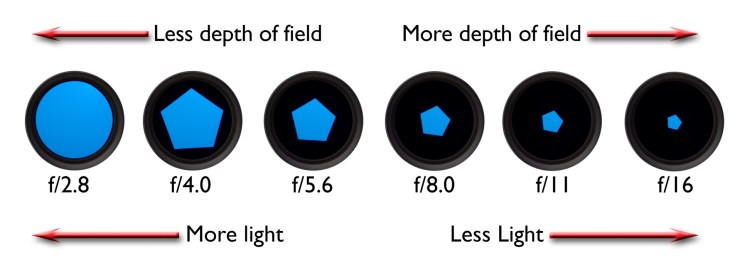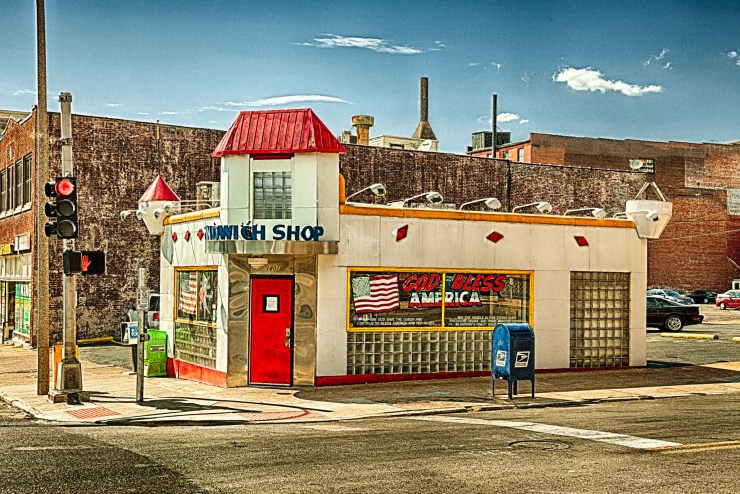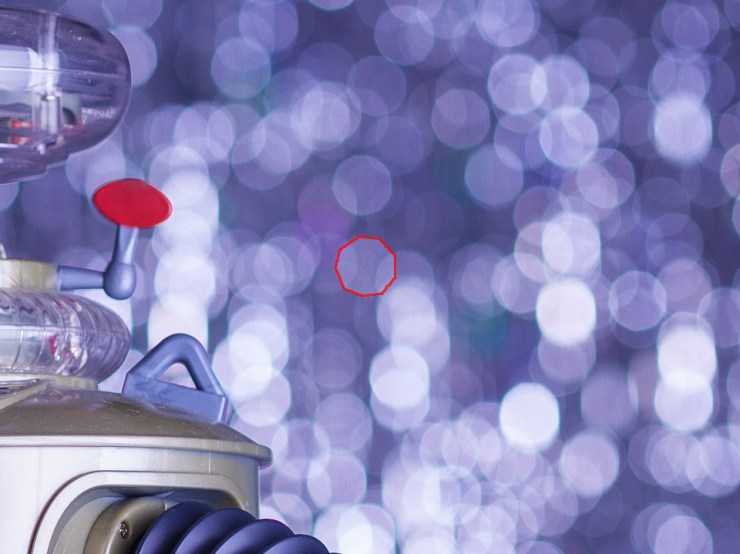The aperture in a lens is photography’s analog to the irises in our eyes. Our irises enlarge to let in more light in dim circumstances. They contract to a smaller size reducing the amount of light in bright places. The aperture (also known as the f/stop) in a lens does the same thing.
Of course, there’s a lot more to it. The aperture not only controls exposure but is also a creative tool. Want the background out of focus? Choose the right aperture. Need things sharp front to back? There’s an aperture for that. Bokeh? Yep. It’s all about the aperture.
F-stop and the amount of light
An f-stop is an amount of light. A full stop either doubles the amount of light striking the sensor or cuts it in half. Apertures are referred to as opening up (adding light) or stopping down (reducing light.) The graphic below shows a full range of f/stop in full-stop increments.

Maximum apertures and lens speed
Maximum aperture is when the highest amount of light passes through to the sensor. The higher the maximum aperture, the faster the lens is considered to be. For example, a lens that opens to f/2.0 is one stop faster than one that has a maximum aperture of f/2.8.
The faster the lens, the higher the price
Lens speed is expensive. Faster lenses cost a lot more money. Faster lenses are heavier, too. For example, Canon’s 85mm f/1.2 lens weighs in at 36.16 ounces. That’s over two pounds. Canon has an 85mm f/1.8 that is a lightweight 15 ounces (just under a pound).
The f/1.2 lens is one stop faster than the f1.8. That speed comes at a cost of $1,580.00 more and a 21 ounce (1.3 pounds) weight penalty. By the way, I use Canon as an example of the physics involved in garnering an additional f-stop of speed. Equivalent lenses from other manufacturers will have similar differences.
Not so common apertures
The fastest lenses with apertures from f/0.5 through f/1.0 are special and relatively rare. Stanley Kubrick used a specially adapted Hasselblad f/0.7 moon landing lens for the candle lit scenes in “Barry Lyndon.” Apertures above f/32 are usually found on larger format cameras whose maximum apertures start at f/2.8, f/4.0, f5.6 and even f/8.0 and above.
Depth of field (DOF)
Depth of field is the acceptable areas of sharpness in front of and behind the actual point of focus. The area of sharpness usually extends one-third of the way in front of the point of focus and two-thirds behind it. There are two major factors concerning how much apparent depth of field a lens offers. The first is focal length, the second is aperture.

Focal length
While all lenses have pretty much the same amount of depth of field, fall off of focus is more apparent with telephotos than with wide angles. The rule of thumb is: wide angle lenses have more apparent depth of field than longer focal lengths.
Aperture
There is less depth of field at the maximum aperture of the lens than at the minimum. Below, the photograph of part of the Confederate section of Atlanta’s Oakland Cemetery was made with a Sigma 70-200mm f/2.8 telephoto zoom lens with the aperture set at its minimum of f/22.
The point of focus is the front headstone. Dandelions in the foreground are fairly sharp. The markers behind it are sharp almost all the way into the background. Frankly, there is too much to see in the image. There isn’t a compelling subject. The eye wanders, working to find the point of the photograph.

This photograph made at f/2.8 concentrates attention on the late infantryman’s tombstone framed subtly by the splashes of yellow of the dandelions. The cemetery is established by the receding stones. Out of focus areas go darker. This natural vignette also enhances the impact of the photo.

Shorter focal length
The photograph below of the Super Sandwich Shop (aka White Knight Diner) in St. Louis shows sharp detail in the curb all the way through the background. There is a little fall off of sharpness as the asphalt reaches the front of the shot.
This image demonstrates that the minimum aperture is not needed to make it acceptably sharp from the foreground to the background.

Bokeh
Aperture makes, shapes and controls those wonderful, desirable out-of-focus highlights known as bokeh. Bokeh is the Japanese word for blur. Characteristics of bokeh are the size of the highlight and its shape.
The size of the bokeh is controlled by the aperture (f-stop) setting. The closer to the maximum aperture, the bigger the bokeh shapes will be. Stopping the lens down makes them smaller and the more out-of-focus the highlight, the rounder it will appear.
Compare the bokeh in the background of my “Lost In Space” robot (“Danger Will Robinson … danger!”). The lens is my Sigma 85mm f/1.4. The nine blades of its aperture make for a very smooth bokeh. Wide-open at f/1.4 the bokeh highlights seem to be round. The exposure in the examples was changed by increasing power to the Dynalite flash heads rather than changing the shutter speed.
.mgl-masonry { display: none; } #mgl-gallery-634ef32f44c29 { column-count: 2; margin: -5px; } #mgl-gallery-634ef32f44c29 .mgl-item { padding: 5px; } #mgl-gallery-634ef32f44c29 figcaption { padding: 5px; } @media screen and (max-width: 800px) { #mgl-gallery-634ef32f44c29 { column-count: 2; } } @media screen and (max-width: 600px) { #mgl-gallery-634ef32f44c29 { column-count: 1; } }




Shape
Roundness of the bokeh is really shaped by the number of blades that make up the aperture in a given lens. Basically, the more blades the rounder the bokeh. Want to know how many blades the aperture in your lens has? Count the sides of the bokeh.

Tell your story with the second annual Visual Storytelling Conference!
Experience four days of interactive, online training sessions featuring a range of educational content with experienced photographers and content creators. This free event kicks off with a series of technical boot camps to build essential skills, followed by live, online sessions on photography, video, business and social media. Join live from March 10-13, 2022!
